Sepiolina
Sepiolina nipponensis
Richard E. Young and Michael VecchioneIntroduction
Sepiolina nipponensis is a peculiar sepiolid whose characteristics place it between the Heteroteuthinae and the Sepiolinae. The tentacular club with a normal keel is similar to that of the Sepiolinae while the silvery sides, ventral shield and large visceral photophore are similar to those of the Heteroteuthinae. A better understanding of the features and habits of this species should greatly aid our understanding of the evolution within the family.
Brief diagnosis:
A heteroteuthin ...
- with mantle narrowly fused to head dorsally.
- without tentacular organ on tentacles.
Characteristics
- Arms
- Arms I of males with glandular structures along dorsal and ventral margins over most of arm length.
- Arms II and III, in males, with greatly enlarged suckers; suckers enlarged to a lesser extent on arms IV.
- Arms of females without obvious modifications.
Figure. Left - Oral view of left arms I-IV of S. nipponensis, mature male, 24 mm ML, Philippine waters. Drawing from Voss (1963). Right - Partial oral view of arms of a mature male, preserved, Japanese waters. Photograph by R. Young.
Figure. Oral views of brachial crowns of S. nipponensis, Japanese waters . Left - Mature male. Right - Mature female. Drawings from Sasaki (1929).
- Tentacles
- Keel extends full length of tentacular club (unlike other heterothins, a tentacular organ is lacking) however, the base of the keel is modified with a permanent fold.
Figure. Side view of the club of S. nipponensis. preserved. Arrow points to the base of the keel which is folded over like the tentacular organ of other heteroteuthins. Photograph by R. Young.
- Head
- Ocular pore present unlike most (all?) other heteroteuthins.
- Funnel
- Funnel component of locking-apparatus with a deep, elongate anterior pit.
Figure. Funnel/mantle locking apparatus of S. nipponensis, Suruga Bay, Japan, 35°N,138°E, NMNH 816246, left = anterior. Top - Frontal view of funnel component. Bottom - Side-oblique view of the mantle component. Photographs by M. Vecchione.
- Mantle
- Mantle fused to head dorsally; fusion narrower than head width.
- Ventral mantle shield extends almost entire length of mantle (see title photograph).
- Lateral mantle with broad, silver band.
 Click on an image to view larger version & data in a new window
Click on an image to view larger version & data in a new window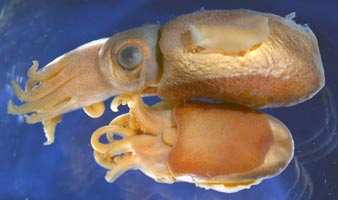
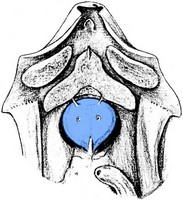
Figure. Left - Side (top) and ventral views of preserved S. nipponensis, 23 mm ML, female (top), 15 mm ML, male (bottom), Japanese waters, showing the extent of the ventral shield. Photograph by R. Young. Right - Ventral view with funnel cut open and mantle removed to show the visceral photophore (colored blue for emphasis). Drawing modified from Sasaki (1929).
- Fins
- Fins do not reach anterior or posterior margins of mantle.
Figure. Dorsal view of a mature male S. nipponensis, ca. 19 mm ML, Japanese waters. Drawing from Sasaki, 1929.
References
Nesis, K. N. 1982/87. Abridged key to the cephalopod mollusks of the world's ocean. 385+ii pp. Light and Food Industry Publishing House, Moscow. (In Russian.). Translated into English by B. S. Levitov, ed. by L. A. Burgess (1987), Cephalopods of the world. T. F. H. Publications, Neptune City, NJ, 351pp.
Sasaki, M. 1929. A Monograph of the Dibranchiate Cephalopods of the Japanese and Adjacent Waters. Journal of the College of Agriculture, Hokkaido Imperial University, 20(supplement):357 pages.
Title Illustrations

| Scientific Name | Sepiolina nipponensis |
|---|---|
| Location | Japanese waters |
| Reference | Sasaki, M. 1929. A Monograph of the Dibranchiate Cephalopods of the Japanese and Adjacent Waters. Journal of the College of Agriculture, Hokkaido Imperial University, 20(supplement):357 pages. |
| Acknowledgements | Photograph by R. Young |
| Specimen Condition | Dead Specimen |
| Sex | Male |
| View | Side |
| Size | ca. 17 mm ML |
About This Page

University of Hawaii, Honolulu, HI, USA

National Museum of Natural History, Washington, D. C. , USA
Page copyright © 2015 and
 Page: Tree of Life
Sepiolina . Sepiolina nipponensis .
Authored by
Richard E. Young and Michael Vecchione.
The TEXT of this page is licensed under the
Creative Commons Attribution-NonCommercial License - Version 3.0. Note that images and other media
featured on this page are each governed by their own license, and they may or may not be available
for reuse. Click on an image or a media link to access the media data window, which provides the
relevant licensing information. For the general terms and conditions of ToL material reuse and
redistribution, please see the Tree of Life Copyright
Policies.
Page: Tree of Life
Sepiolina . Sepiolina nipponensis .
Authored by
Richard E. Young and Michael Vecchione.
The TEXT of this page is licensed under the
Creative Commons Attribution-NonCommercial License - Version 3.0. Note that images and other media
featured on this page are each governed by their own license, and they may or may not be available
for reuse. Click on an image or a media link to access the media data window, which provides the
relevant licensing information. For the general terms and conditions of ToL material reuse and
redistribution, please see the Tree of Life Copyright
Policies.
- First online 01 September 2004
- Content changed 04 April 2008
Citing this page:
Young, Richard E. and Michael Vecchione. 2008. Sepiolina . Sepiolina nipponensis . Version 04 April 2008 (under construction). http://tolweb.org/Sepiolina_nipponensis/20034/2008.04.04 in The Tree of Life Web Project, http://tolweb.org/




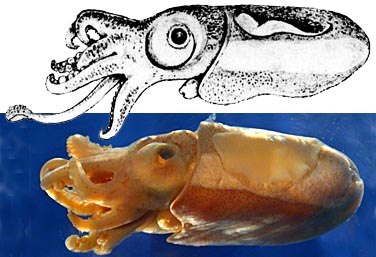
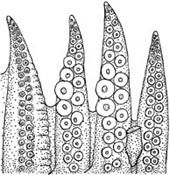
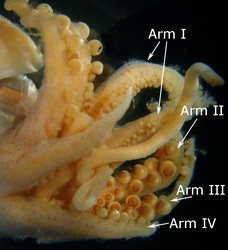




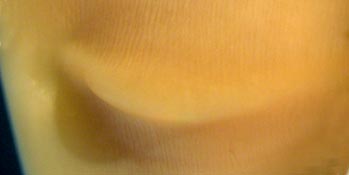
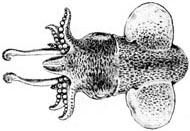



 Go to quick links
Go to quick search
Go to navigation for this section of the ToL site
Go to detailed links for the ToL site
Go to quick links
Go to quick search
Go to navigation for this section of the ToL site
Go to detailed links for the ToL site